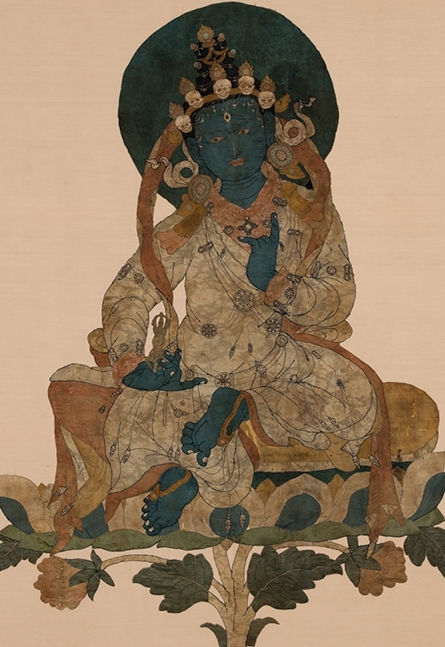
Large silk appliqué images, or gos sku in Tibetan, are made of colored silk or satin brocades sewn into gigantic compositions. Hoisted on a tall exterior wall of a monastery or draped on the side of a hill or mountain, these massive silk appliqué thangkas were displayed on special occasions for all to see. One such occasion is Padmasambhava’s Day (Day of his Miraculous Birth), which typically falls on the tenth day of the sixth month in the Tibetan lunar calendar; this year it is June 23 on the Gregorian calendar. Marked by large gatherings of people performing communal prayers and rituals, the day culminates in a feast and the display of large appliqué images for the benefit of the attendees as well as all sentient beings. Known among Tibetan Buddhists as the Second Buddha, Padmasambhava is believed to have visited Tibet during the 8th century and is considered instrumental in making Buddhism flourish in Tibet.
This silk appliqué figure is one of eight manifestations of Padmasambhava around a larger central image of the Buddhist master as a part of a giant silk appliqué, which would have been unrolled on the side of a mountain. The tradition of creating and viewing monumental appliqué images continues in Himalayan regions and remains one of the most impressive treasures of Tibetan Buddhist culture.
See our Art of the Week up close in the exhibition The Second Buddha: Master of Time, on view through January 7, 2019.
85 1/8 x 60 5/8 x 1 1/8 in.
C2003.34.2, HAR 65253
- https://dev.rubinmuseum.org/images/content/6335/_c2003.34.2_har_65253__zoom.jpg
- https://dev.rubinmuseum.org/images/content/6335/_c2003.34.2_har_65253__zoom.jpg

